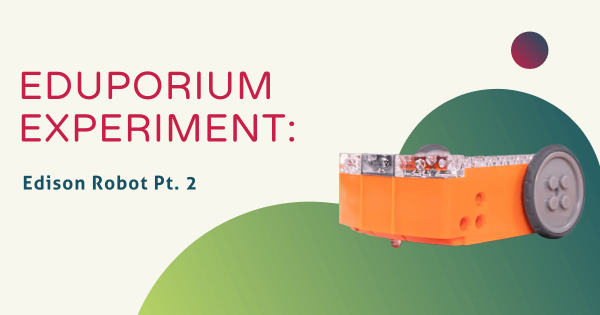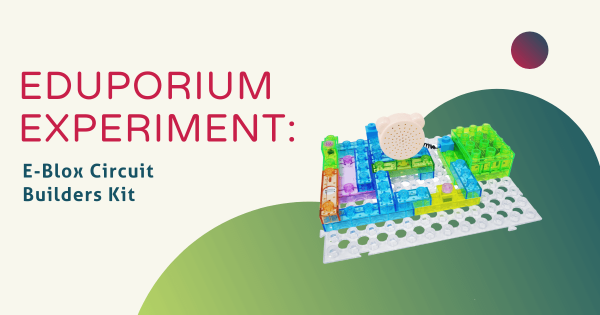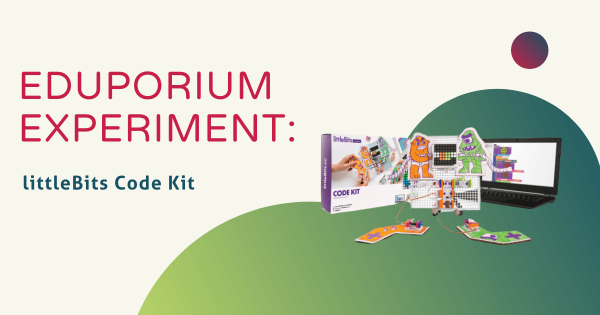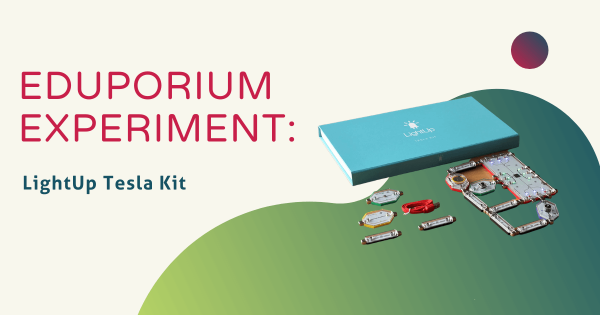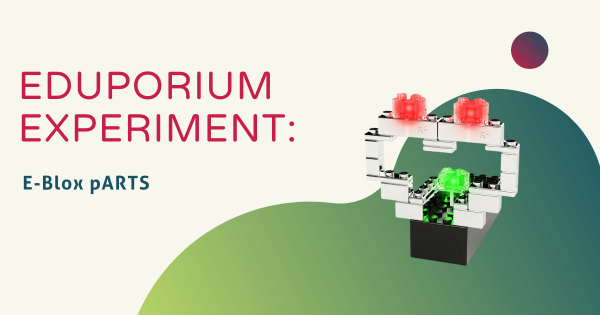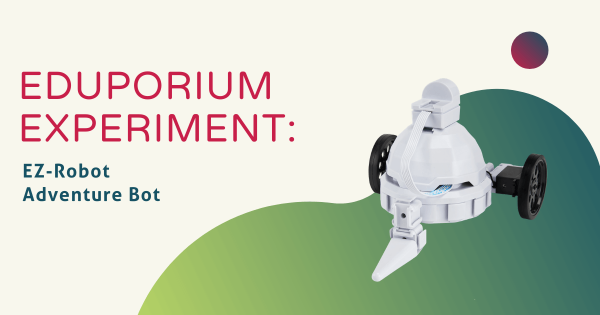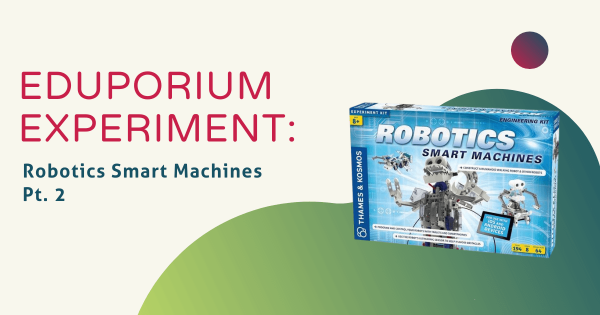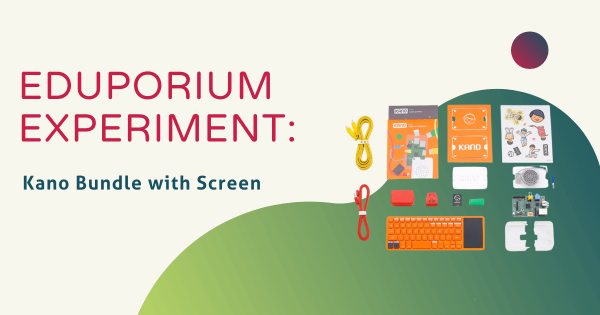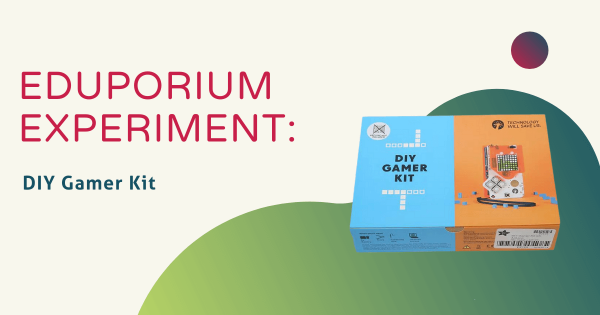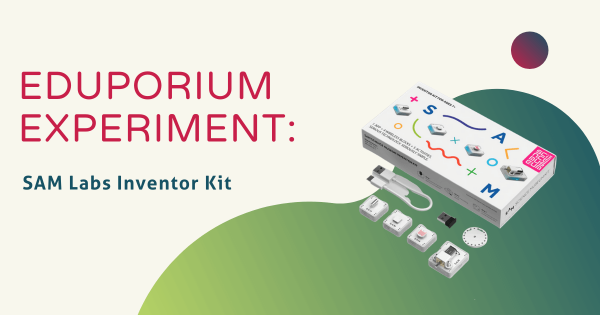Edison is the perfect teaching tool for STEM activities since it’s so incredibly versatile. A while ago—about a year now at this point—we were introduced to the Edison Robot and did a nice little write-up on it in what you now know as the Eduporium Experiment. Now, it’s revamped, however, and we’ve got some new stuff to cover, so here
Eduporium Experiment
Our Eduporium Experiment series is one of our longest running blogs. Whenever we add new STEAM solutions to our store, we try it out so we can learn all about it. Over the years, we've covered dozens of top STEAM teaching tools, offering our first-hand insights and tidbits for educators. We believe this content gives K–12 teachers valuable information when it comes to using various STEAM solutions with their students. Our team analyzes products from different points of view and even considers implementation strategies in different educational environments. Whether it's most useful in the makerspace, library, or in the general classroom, we're happy to continue providing these helpful guides. You'll even find classroom-ready STEAM projects to try with your students. Browse through the posts or use the search bar on the left to find exactly what you're looking for.
In each 'experiment,' we provide key background information on the STEAM tool being featured. From there, we explore an actual project. This allows us to discover subtle tricks and hints that are extremely helpful for educators to know. Whether it's a coding tool, educational robotics solution, or even an engineering kit, we do our best to cover everything educators are investigating. As the Eduporium Experiment series has expanded, we've come a pretty long way. Now, you can find dozens of helpful articles that may include step-by-step project guides, troubleshooting suggestions, and even our thoughts on what makes each STEAM tool worthwhile for 21st century students. Find our insights on integrating STEM tools like the Bee–Bot, Finch 2.0, Ozobot Evo, micro:bit V2, and so many more!
-
Eduporium Experiment | E-Blox Circuit Builders Kit
Circuitry kits like this one are a great way to introduce elementary students to one of the most important STEAM concepts. And, this one in particular is especially versatile because it combines so many specific STEM disciplines in one dynamic tool. There are three different versions with 59, 115, and 120 projects. -
Eduporium Experiment | littleBits Code Kit
Coding is going to be the literacy of the 21st century as more and more of the most lucrative careers require entry-level employees to have some form of mastery. Wouldn’t it be great if there was an EdTech product that leveraged the fun parts of STEM education, like making, design, and invention, while kids learned how to code? -
Eduporium Experiment | LightUp Tesla Kit
At Eduporium, we very much appreciate EdTech that is engaging, enables creativity, and allows students to build Future Ready skills. Perhaps above those three characteristics, we value and promote tech tools that are progressive. That’s exactly the case with the focus of this week’s Eduporium Experiment, the LightUp Tesla Kit. -
Eduporium Experiment | E-Blox pARTS
At Eduporium, we like tech tools that progress with students as they learn more skills. There are plenty of kits and product lines that do the same and one of them, which we were only introduced to recently, is E-Blox. The E-Blox team has created a new and perhaps even more exciting spin on LEGO’s—one that will get kids excited -
Eduporium Experiment | EZ-Robot Adventure Bot
We have discovered more STEM products in the EZ-Robot line and have added all of them to our store. The EZ-Robot team really has thought of everything—well, just about everything. Joining the original models are a Battle Flipper, Galapagos Bot, and the subject of this week’s Eduporium Experiment—the EZ-Robot Adventure Bot. -
Eduporium Experiment | Robotics Smart Machines Pt. 2
Thames & Kosmos is known—at least throughout our office—as a company that perfectly combines technology, construction, and just about every STEM discipline. They have a number of hands-on kits that help kids learn the basics of solar energy, coding, atoms, and a ton more. This week, we dove into their Robotics Smart Machines Kit. -
Eduporium Experiment | Kano Bundle with Screen
The Kano team now has a bundled kit complete with a screen and we put that to the test in our office for this edition of the Eduporium Experiment. Just following the instructions was enough because the included illustrations are very clear and easy to follow. I didn’t have to Google anything or spend any extra time pulling up YouTube -
Eduporium Experiment | DIY Gamer Kit
In 21st century education, much has been made about game-baed learning and its place in the classroom. Some educators and learning experts have questioned its legitimacy as a teaching approach while others have embraced it and used it effectively. Now, students also have the opportunity to create their own games! -
Eduporium Experiment | SAM Labs Inventor Kit
A few weeks ago, we reviewed the SAM Labs Curious Cars Kit for the Eduporium Experiment and now this week’s edition has the SAM Labs Inventor Kit in store for us! SAM Labs is a British company who’s committed to bringing hands-on STEAM to early education and have created three innovative kits that do just that.




